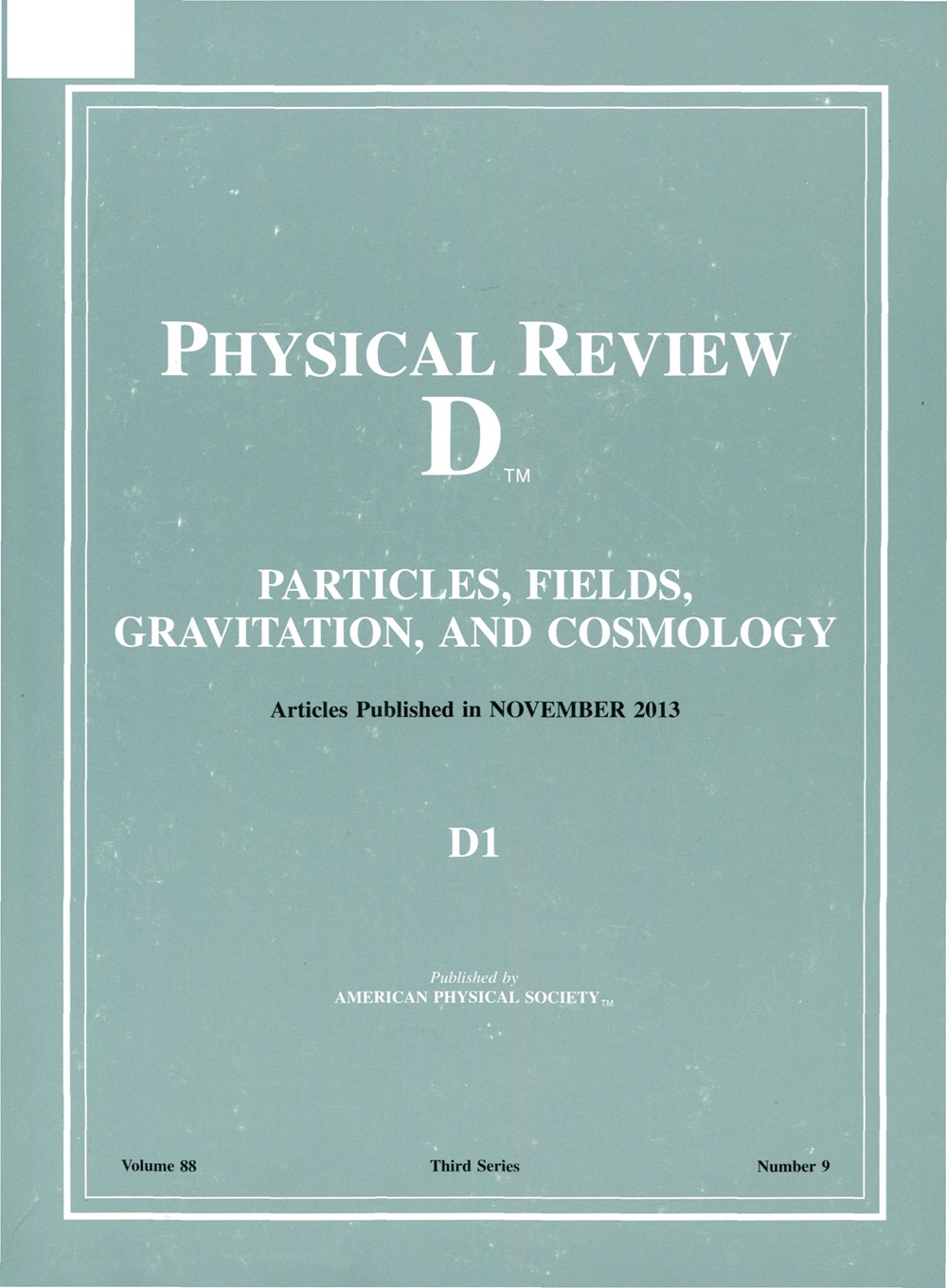用引力波探测器探索超轻暗物质的自旋
IF 5.3
2区 物理与天体物理
Q1 Physics and Astronomy
引用次数: 0
摘要
我们提出了一种利用干涉引力波探测器区分超轻暗物质(ULDM)自旋的新方法。超轻暗物质可以是自旋为 0、1 或 2 的玻色场,每一种都会在信号中产生独特的特征。我们发现,有限时间旅行效应会导致自旋-0 和自旋-1 ULDM 产生主要信号,而自旋-2 则不会。通过使用多个探测器的重叠还原函数(ORF),我们可以区分 ULDM 的自旋。此外,我们还指出,如果考虑到 ORF 上的有限时间光旅行效应,目前对自旋-1 ULDM 与重子耦合常数的约束会减弱 30 倍。本文章由计算机程序翻译,如有差异,请以英文原文为准。

Exploring the spin of ultralight dark matter with gravitational wave detectors
We propose a novel method for distinguishing the spin of ultralight dark matter (ULDM) using interferometric gravitational wave detectors. ULDM can be a bosonic field of spin-0, 1, or 2, and each induces distinctive signatures in signals. We find that the finite-time traveling effect causes a dominant signal for spin-0 and spin-1 ULDM, but not for spin-2. By using overlap reduction functions (ORF) of multiple detectors, we can differentiate between the spins of ULDM. Furthermore, we point out that the current constraint on the coupling constant of spin-1 ULDM to baryons becomes 30 times weaker when the finite-time light-travel effect on the ORF is taken into account.
求助全文
通过发布文献求助,成功后即可免费获取论文全文。
去求助
来源期刊

Physical Review D
物理-天文与天体物理
CiteScore
9.20
自引率
36.00%
发文量
0
审稿时长
2 months
期刊介绍:
Physical Review D (PRD) is a leading journal in elementary particle physics, field theory, gravitation, and cosmology and is one of the top-cited journals in high-energy physics.
PRD covers experimental and theoretical results in all aspects of particle physics, field theory, gravitation and cosmology, including:
Particle physics experiments,
Electroweak interactions,
Strong interactions,
Lattice field theories, lattice QCD,
Beyond the standard model physics,
Phenomenological aspects of field theory, general methods,
Gravity, cosmology, cosmic rays,
Astrophysics and astroparticle physics,
General relativity,
Formal aspects of field theory, field theory in curved space,
String theory, quantum gravity, gauge/gravity duality.
 求助内容:
求助内容: 应助结果提醒方式:
应助结果提醒方式:


